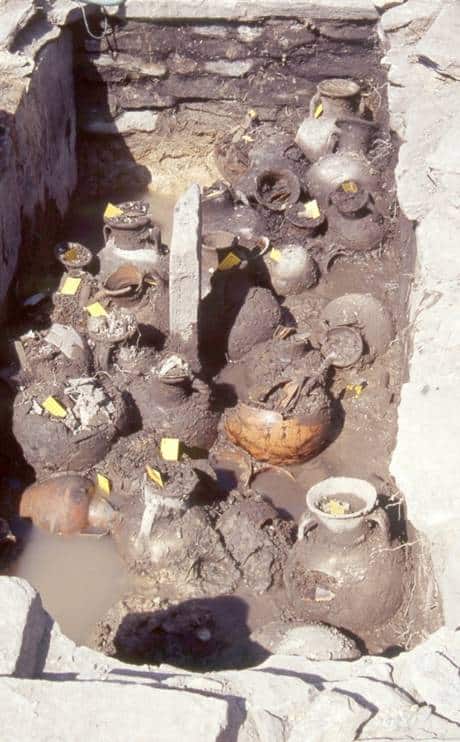The Petros D. Goneos Memorial Award
ACADEMIC YEAR 2023 – 2024
SCHOLARSHIPS

To this end, they have announced the annual 5000 USD Award in memory of Petros D. Goneos, former active member and Vice President of the Cycladic Art Foundation, to be given each year to one or more research proposals submitted by young scholars and judged by an Academic Advisory Committee. For the academic year 2022-2023, second year of the Award, the large number of very competitive proposals submitted by researchers from major Universities in Greece and abroad led the Award’s actors to the decision to fund a total of three research proposals with the amount of 5000 USD each.
The aim of the Museum of Cycladic Art and the Cycladic Art Foundation is for this annual academic Award to become an institution that will essentially promote research and the production of high quality studies on the culture of the Cyclades over time, while helping young researchers in their first academic steps.
WINNERS
Ancient Tinian serpentinite production
Dr. Alkiviadis Sideridis, University of Patras
Dr. Thorsten Jakobitsch, University of Natural Resources and Life Sciences Vienna
A ‘Ptolemaic quarter’ in the center of the Aegean: the Ptolemaic presence in the Cyclades
Burial practices and social structures in the Cyclades during the 8th and 7th centuries BC. The case of the cemetery at Viji on Paros
ACADEMIC COMMITTEE
Professor Jan Driessen
Dr. Anastasia Gadolou
Dr. Dimitrios Athanasoulis
Professor Nikos Kontogiannis
Professor Apostolos Sarris
1st Winner: Ancient Tinian serpentinite production

Vasiliki Anevlavi, Ph. D. candidate
Dr. Alkiviadis Sideridis
Dr. Thorsten Jakobitsch
Our research is part of an interdisciplinary approach based upon three pillars: archaeological, geological and lichenometric investigations of the Tinian ancient serpentinite quarry, Ras. In Tinos, the ancient and abandoned quarry of Ag. Georgios Ras comprise a unique texture of dark green serpentinite intersected by a bright green serpentine network.
Extensive ancient quarry facades are visible, with traces of tool marks. Supported by the ‘Goneos Award’, the research will be further framed by a lichenometric and photogrammetric study. This unique case study will provide extraordinary new information since ancient serpentinite quarrying activity is rather rare both in Greece and globally.
The research is supported and co-studied by Dr Anastasia Angelopoulou, responsible archaeologist of Tinos Island and the Ephorate of Antiquities of Cyclades.
2nd Winner: A ‘Ptolemaic quarter’ in the center of the Aegean: the Ptolemaic presence in the Cyclades

Dr. Apostolos Papiomitoglou
The research aims to study the relations between the Ptolemies and the Cycladic area at a political, social, economic, cultural and religious level, through the examination of all the available material (epigraphical, archaeological, papyrological, numismatic).
The overview and the historical reading of these testimonies will attempt a new research approach to issues related to Ptolemaic foreign policy in the central Aegean, tracing the varied interactions between kings and islanders.
Our aim is to process all the available material in order to identify as many strands of the Ptolemaic presence in the Cyclades as possible, and to comprehend and analyse thoroughly its nature and structure.
3rd Winner: Burial practices and social structures in the Cyclades during the 8th and 7th centuries BC. The case of the cemetery at Viji on Paros

Dimitrios Grimanelis, Ph. D. candidate
The current study examines the burial practices and social structures in the Cyclades during the 8th and 7th centuries B.C. focusing on the case of the Vitzi cemetery in Paroikia Paros. The main goal of this project is to undertake the research of collective burials in classical antiquity utilizing an original, innovative and interdisciplinary approach.
This project proposes the examination of burial practices from the point of view of anthropology and sociology. Moreover, this research aims to contribute to the overall study of burial rituals in Ancient Greece and to also enrich our knowledge on funerary archaeology and pottery production of Paros during the Late Geometric and Early Archaic period.









